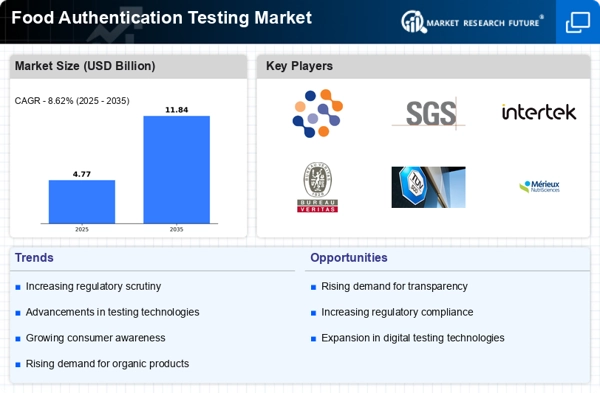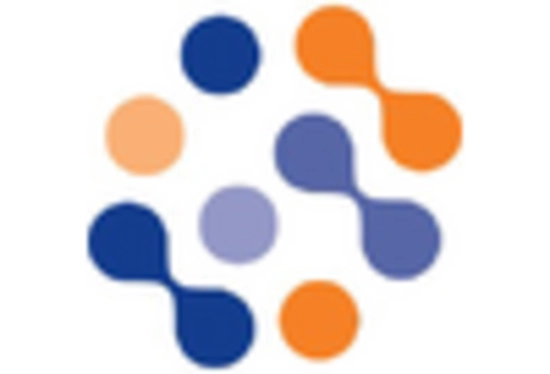Increased Regulatory Scrutiny
Regulatory bodies are intensifying scrutiny over food safety and authenticity, significantly impacting the Food Authentication Testing Market. Governments worldwide are implementing stricter regulations to combat food fraud and ensure consumer protection. For example, the introduction of the Food Safety Modernization Act in various regions mandates comprehensive testing protocols for food products. This regulatory environment compels food manufacturers to adopt rigorous testing measures, thereby driving demand for authentication services. As compliance becomes non-negotiable, companies are increasingly investing in testing solutions to meet regulatory requirements. This trend not only enhances food safety but also stimulates growth within the Food Authentication Testing Market, as businesses seek to avoid penalties and maintain consumer trust.
Rising Incidences of Food Fraud
The increasing occurrences of food fraud have become a pressing concern within the Food Authentication Testing Market. Reports indicate that food fraud costs the industry billions annually, with estimates suggesting losses could reach up to 40 billion dollars. This alarming trend has prompted stakeholders to seek reliable testing methods to ensure product integrity. As consumers become more discerning, the demand for authentic food products intensifies, driving the need for robust authentication testing. Consequently, food manufacturers and retailers are investing in advanced testing technologies to mitigate risks associated with food fraud. This shift not only enhances consumer trust but also fortifies brand reputation, thereby propelling growth within the Food Authentication Testing Market.
Consumer Demand for Transparency
The modern consumer is increasingly demanding transparency regarding food sourcing and authenticity, which is significantly influencing the Food Authentication Testing Market. Surveys indicate that a substantial percentage of consumers are willing to pay a premium for products that are verified as authentic. This shift in consumer behavior is prompting food producers to adopt authentication testing as a means to differentiate their products in a competitive market. As brands strive to meet consumer expectations, the integration of testing protocols into supply chains is becoming more prevalent. This trend not only enhances product credibility but also drives innovation in testing methodologies, thereby contributing to the expansion of the Food Authentication Testing Market.
Emerging Markets and Global Trade
Emerging markets are witnessing a surge in food trade, which is creating new opportunities within the Food Authentication Testing Market. As international trade expands, the need for reliable authentication testing becomes paramount to ensure compliance with varying standards and regulations. Countries with burgeoning economies are increasingly focusing on food safety and quality, leading to heightened demand for testing services. For instance, the rise of e-commerce in food distribution has necessitated stringent testing protocols to assure consumers of product authenticity. This trend is likely to continue as global trade dynamics evolve, presenting a fertile ground for growth in the Food Authentication Testing Market.
Technological Innovations in Testing
Technological advancements are reshaping the landscape of the Food Authentication Testing Market. Innovations such as DNA barcoding, mass spectrometry, and blockchain technology are revolutionizing how food authenticity is verified. These cutting-edge methods offer enhanced accuracy and efficiency, allowing for rapid testing and real-time results. For instance, the adoption of DNA-based testing has shown a remarkable increase in precision, with some methods achieving over 99% accuracy. As these technologies become more accessible and cost-effective, their integration into routine testing protocols is likely to expand. This trend not only streamlines the testing process but also elevates the standards of food safety and quality assurance, thereby fostering growth in the Food Authentication Testing Market.


















Leave a Comment